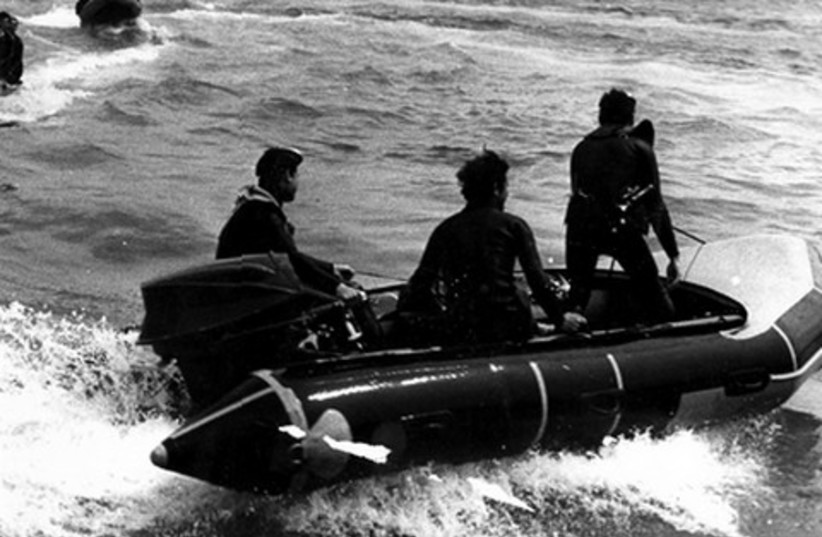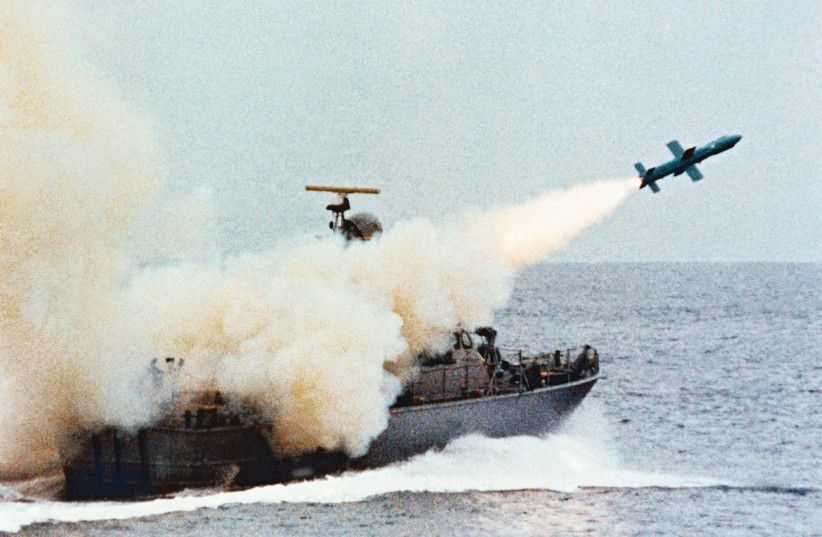A newly released document by the commander of the Israel Navy during the Yom Kippur War has shed some more light on the course of the conflict half a century ago.
“We’ve gone into battle to defend the peace of Israel, its rights and its freedoms,” V-Adm. Benjamin Telem, the head of the Israel Navy, wrote in a telegram to his naval commanders at the conflict’s outset.
The war broke out on October 6, 1973, when Israel was largely taken by surprise when the forces of Egypt and Syria attacked together in the Sinai and Golan Heights, respectively.
Two thousand, six hundred and eighty-nine Israeli soldiers were killed during the war and thousands more suffered physical wounds and mental trauma, and hundreds were taken captive.
During that most difficult of wars, Telem led the navy to decisive victories at sea and quickly achieved maritime supremacy over Syria and Egypt.

“The forces of Egypt and Syria opened an aggressive and merciless war in the air, in the sea, and on the land, and raided IDF strongholds and bases along the borders of Syria and Egypt,” Telem wrote. “The navy, which over the years has undergone a complete change in its armaments and equipment, has quickly and efficiently prepared for every mission that will be assigned to it in the maritime theater.”
The telegram, an after-action report, a radio recording, and a summary by Telem shed new light on the successes of the navy in winning control at sea.
The Battle of Latakia
One of the most notable naval conflicts of the war was the Battle of Latakia, which according to the IDF, was the first time in naval history in which sea-to-sea missiles were deployed.
“In the battle between navy missile boats and the Syrian vessels that took place in the sea opposite the Latakia Port, they eliminated three missile boats of the ‘Komar’ and ‘Osa’ class, eliminated one [Project] 123-K class torpedo boat, and eliminated a T43 minelayer,” read the post-battle report from October 7.
“The Syrian missile boats fired on the navy missile boats about eight ‘Styx’ missiles but all missed our forces. Two ‘Styx’ missiles were shot down by the missile boats’ anti-missile fire from 40- and 20-mm cannons. The navy missile boats that engaged the Syrian vessels attacked with ‘Gabriel’ sea-to-sea missiles and their cannons. They fired eight ‘Gabriel’ missiles during battle and confirmed that six of them hit the enemy.”
In a radio recording, “Bini” Telem is heard informing then-chief of staff David Elazar of the success.
“Commander, this is Bini, our vessels are near Latakia in the missile ship battle, at this stage, we hit two and are preparing to shoot on the containers,” said Telem on the night of October 6.
“Bini, well done to the navy!” said Elazar. “This is an important contribution, Bini, and now finish off the oil tanks.”
The naval commanders later detailed how they avoided guns placed along the shore, which “wasn’t terrible.” They were told not to take chances, and responded “We won’t take chances, we’ll fight.”
In another battle in the Mediterranean, near Bardawil Lake at the northwestern end of the Sinai Peninsula, Israeli naval forces ambushed an Egyptian flotilla of two missile boats and two torpedo boats. The battle began about 30 miles northeast of Port Said, and the Egyptian force retreated. The Israeli missile boats fired 11 missiles, but failed to hit their target, which the summary attributed to launching while giving chase.
An IAF plane hit an Egyptian missile boat and the report noted an unconfirmed Gabriel missile strike on another enemy ship. The Israeli force emerged unscathed.

In the Red Sea, Two Dabur patrol boats attacked near Zaafarana, finding and eliminating two “Mark-5 inflatable boats and their crews, who were Egyptian commandos preparing for a raid in the area of Abu Rudeis.”
In his telegram, Telem also noted the sinking of an “Egyptian ‘Bertram’ [patrol] boat,” which wasn’t included in the summary. One Israeli sailor was killed and six suffered light to medium wounds. One of the Daburs was slightly damaged and arrived under its own power at Abu Zneimeh, it was reported.
In another Red Sea incident, the Liberian-flagged tanker Samson was reported to have been attacked by an Egyptian submarine, but the torpedoes missed their target.
“We did not initiate this war, we did not start it, but we will continue and beat the belligerent enemy in every place we engage with it,” Telem told his officers on October 6.
“Thanks to the level of our character and our high professionalism, our forces can stop the attacks and overpower the enemy militaries until our victory, as we have in the recent battles.”
In his summary of the war, Telem wrote how the navy had been painstakingly developed since 1963, establishing clear training regimens, ranks, and logistics and maintenance procedures.
“During these long years we developed weapons, control systems, and electronic warfare,” said Telem. “We built vessels at home and abroad.”
Naval commando and demolition teams were formed, carrying out “bold” and “skillful” action “with far-reaching results.”
“There is no success and achievement in battle without warriors, sailing teams, and bold commanders,” said Telem, nor all the logistical, maintenance, supply, and support teams.
Yet Telem advised his men not to rest on their laurels, to learn lessons from the battle, and to continue to prepare for future conflicts.
